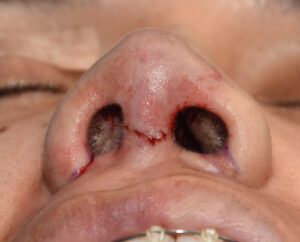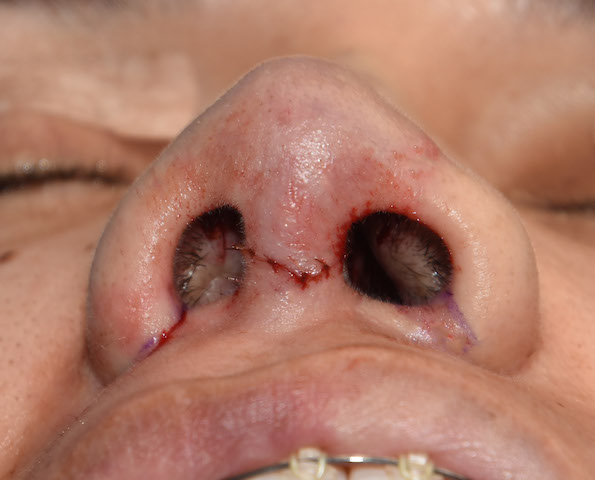Rhinoplasty surgery almost exclusively revolves around manipulation of its osteocartilaginous support framework. It is a true facial reshaping procedure whose result ultimately depends on the combination of how the support structure is altered and how the overlying skin shrinks down around it to reveal those changes.
The one exception in rhinoplasty in which bone and cartilage are not manipulated is that of the nostrils….specifically that of the nostril width. The outer half of the nostrils is not supported by cartilage directly and is made up of skin and underlying fibrofatty tissue. Nostril width, or the distance between the two outer sides of the nostrils, is controlled by the natural position of the alar base and the thickness of the nostril tissues. The perception of nostril width is certainly influenced by nose tip projection. The more projection the nose has the less wide the nostrils may appear.

There are other types of nostril reshaping which can also decrease nostril length and thickness. These require the excision pattern to come further out around the sides of the nostrils, putting the scar line in the alar-facial crease. This is a less forgiving scar than one placed just inside the nostril but is also a more multidimensional nostril reshaping technique.
Dr. Barry Eppley
Indianapolis, Indiana



